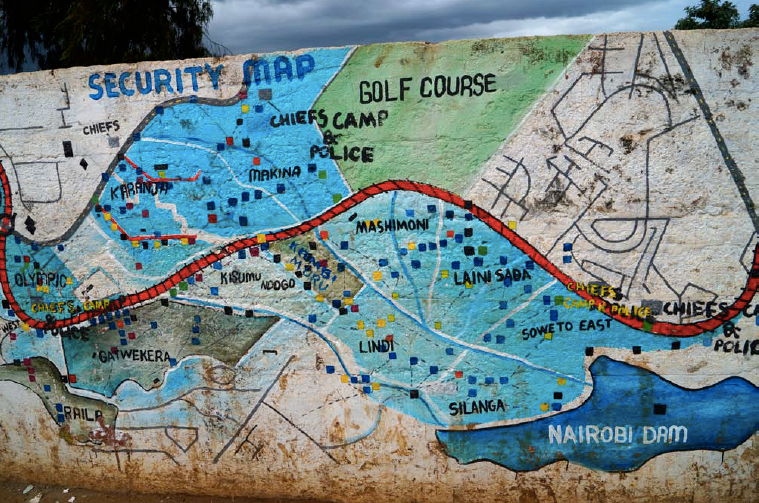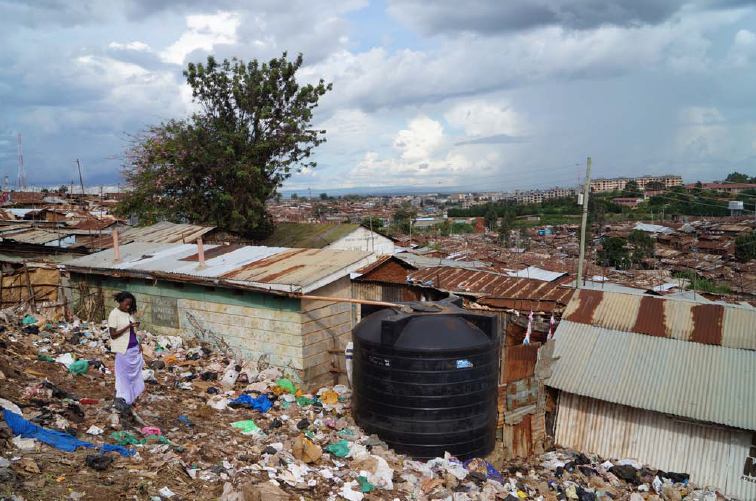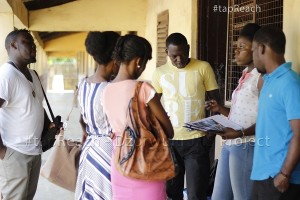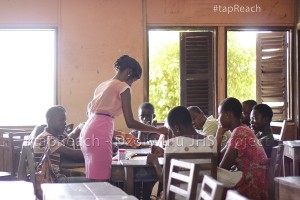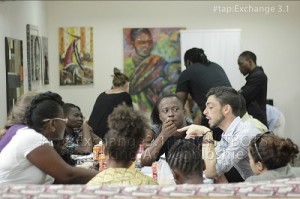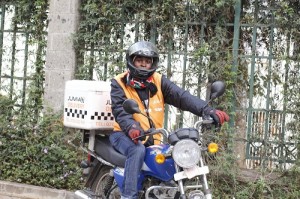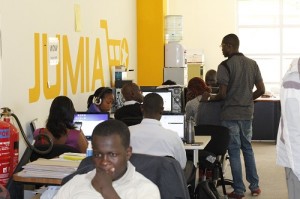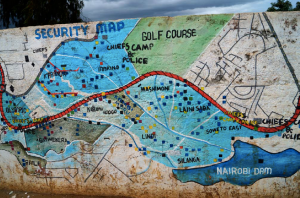 Dans mes articles sur l'amélioration de la vie dans les bidonvilles, j’avais dit que je rêvais d'un processus participatif dans lequel chaque habitant pourrait exprimer ses besoins et ses ambitions pour le bidonville. Grâce à ce processus, ces personnes pourraient proposer un plan directeur qui permettrait aux ONG et aux organismes publics de travailler ensemble pour une amélioration coordonnée de Kibera. Un tel processus n’existe pas encore. Toutefois, il existe une organisation qui recueille et synthétise des données sur Kibera, en utilisant des processus participatifs et améliore le travail de dizaines d'organisations de la société civile. Cette organisation s'appelle Map Kibera, c'est l'une de mes organisations préférées qui travaille dans le bidonville.
Dans mes articles sur l'amélioration de la vie dans les bidonvilles, j’avais dit que je rêvais d'un processus participatif dans lequel chaque habitant pourrait exprimer ses besoins et ses ambitions pour le bidonville. Grâce à ce processus, ces personnes pourraient proposer un plan directeur qui permettrait aux ONG et aux organismes publics de travailler ensemble pour une amélioration coordonnée de Kibera. Un tel processus n’existe pas encore. Toutefois, il existe une organisation qui recueille et synthétise des données sur Kibera, en utilisant des processus participatifs et améliore le travail de dizaines d'organisations de la société civile. Cette organisation s'appelle Map Kibera, c'est l'une de mes organisations préférées qui travaille dans le bidonville.
La création de Map Kibera
Map Kibera a été créé en 2010 pour combler «le manque d'information» dans Kibera. Ses fondateurs ont remarqué que le Conseil municipal de Nairobi avait cartographié le bidonville comme une forêt et que ce lieu n’existait pas sur les ressources de cartographie en ligne telles que Google Maps et Open Street Map. En outre, même si de nombreuses ONG et institutions publiques sont impliquées dans la collecte de données sur place, aucune n’est disponible au niveau local. En introduisant la cartographie participative dans le bidonville, Map Kibera vise à combler cette lacune.
Au-delà de l'envie d'améliorer l'information sur le terrain, l'organisation vise à promouvoir l'autonomie des citoyens en leur donner le pouvoir de s’exprimer sur le processus de gouvernance et en leur apprenant à faire des rapports sur leur propre environnement. Dans les zones informelles, les ressources de rapports et d’études n’impliquent pas forcément la communauté dans la collecte de données. Enseigner aux gens de la communauté comment recueillir des données est aussi une façon de leur apprendre à utiliser l’information pour rendre compte des difficultés auxquelles ils font face. Cela permet une plus grande participation des populations locales dans le processus démocratique.
L'émancipation par la cartographie
L'association a décidé de former 13 jeunes de 13 villages différents de Kibera à l'utilisation de Open Street Map. Pendant trois semaines, et avec l'aide de professionnels de SIG locaux, Map Kibera a recueilli des données grâce à l'utilisation du GPS en utilisant un logiciel open source.
Le projet a commencé par une étude de faisabilité permettant aux jeunes de l'organisation d’identifier les lieux et les partenaires appropriés. Les partenaires entrants ont reçu une formation et sont allés dans des zones non cartographiées pour recueillir des données. Ils ont ensuite téléchargé ces données sur Open Street Map. Puis, les partenaires ont imprimé la carte et l'ont présentée à la population locale. Ces réunions visaient à sensibiliser et à permettre une meilleure cohésion entre les différents villages. En outre, Map Kibera a mis sur pied un blog avec un espace wiki permettant aux parties prenantes de discuter de la planification du projet.
Un an après sa création, Map Kibera a mis en œuvre une stratégie pour permettre aux gens d'accéder à l'information en affichant des cartes pour la communauté. Les cartes furent peintes sur les murs pour montrer aux gens les accès aux services publics. La collecte des données a aidé à la réunification des membres de la communauté avec les dirigeants locaux et les différents travailleurs sociaux dans le bidonville. Grâce à cela, ils ont créé un vaste réseau de distribution de cartes d’une plus grande précision. Ils ont permis également d’identifier plus de personnes qui pouvaient aider à la collecte de données plus précises.
Impacts
Map Kibera a créé une carte se référant à la sécurité. Cette carte est extrêmement utile pour la communauté car elle indique les taches noires – les zones où il est dangereux de marcher jour et nuit. Grâce au soutien de jeunes autochtones, les cartographes ont été en mesure de localiser les endroits où d'autres jeunes chômeurs errent. Le manque de revenus et des opportunités à Kibera les ont poussés au crime. Ils se droguent et attaquent des personnes causant des blessures graves ou la mort. Cette carte sert l'intérêt général car elle permet aux habitants de Kibera qui viennent d'un village différent d'être informés des endroits dangereux.
Si les cartes aident la communauté, elles ont également eu un impact sur l'amélioration de l'environnement urbain. Les cartes ont un impact indirect sur l'espace urbain. En 2010, l'UNICEF a financé une autre carte sur l'eau et l'assainissement à Kibera. Certains des villages ne disposaient pas d'eau. Map Kibera a été en mesure de travailler en partenariat avec l'ONG WASUP afin de localiser les lieux mal équipés en matière d’assainissement. Grâce à ces informations, WASUP a été en mesure de construire des réservoirs d'eau dans ces zones.
Le développement durable au cœur du projet
Le projet est économiquement, socialement et écologiquement durable. Economiquement, la Fiducie travaille comme une entreprise, elle vend des cartes à différentes parties prenantes et paient les jeunes cartographes – leur offrant ainsi un emploi. Ces derniers parviennent également à gagner de l'argent lorsque les fonds sont disponibles.
La durabilité du projet est également assurée par sa capacité à améliorer la situation des jeunes (dans une moindre mesure car seulement quelques personnes sont sollicitées pour recueillir des données pour chaque carte) et à faire de chaque cartographe un acteur dans le développement du bidonville. Au niveau communautaire, l'information est utile pour les habitants du bidonville. Ils sont informés des endroits dangereux et de l’emplacement des services d'assainissement adéquats. Indirectement, l'accès à ces informations par d’autres organisations a permis la planification des services plus adéquats à travers un règlement informel.
De la coordination des services à la remise à niveau du bidonville.
En développant un réseau d'acteurs locaux, Map Kibera a réussi à devenir un acteur incontournable dans le domaine. Ils rassemblent toutes les informations nécessaires pour les ONG afin de leur permettre de travailler efficacement. Ils disposent de l'information nécessaire pour maximiser leur impact sur le bidonville et leur permettre de travailler d'une manière coordonnée. À cet égard, Map Kibera a prouvé que la gestion de l'information peut être réellement utile pour influencer la communauté et son environnement urbain.
Traduit par Koriangbè Camara
Article originellement paru sur le blog de l'auteur:
http: //carolineguillet.com/2014/05/18/map-kibera-first-step-towards-bottom-up-slum-upgrading/
Map Kibera Site Web: www.mapkibera.org

